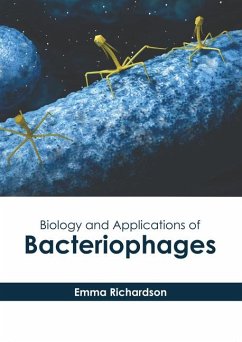
Protein Secretion Pathways in Bacteria
Versandkostenfrei!
Versandfertig in über 4 Wochen
132,99 €
inkl. MwSt.

PAYBACK Punkte
66 °P sammeln!
Bacteria are living organisms found ubiquitously in nature and have only one biological cell. They constitute a wide domain of prokaryotic microorganisms. In bacteria, unfolded proteins are transported through the secretion pathways across the cytoplasmic membrane. This transportation consists of three parts, which include a protein targeting component, a motor protein and membrane integrated conducting channel. Bacteria have a range of protein transportation pathways, which are necessary for functions like pathogenicity and viability. Generally, bacterial secretion comprises secretion of unfo...
Bacteria are living organisms found ubiquitously in nature and have only one biological cell. They constitute a wide domain of prokaryotic microorganisms. In bacteria, unfolded proteins are transported through the secretion pathways across the cytoplasmic membrane. This transportation consists of three parts, which include a protein targeting component, a motor protein and membrane integrated conducting channel. Bacteria have a range of protein transportation pathways, which are necessary for functions like pathogenicity and viability. Generally, bacterial secretion comprises secretion of unfolded proteins which primarily remain within the cells. In case of gram-negative bacteria, secreted proteins are delivered to inner membrane or the periplasm. The protein can remain in the cell or it is usually transported out of the bacteria via other secretion systems. Klebsiella pneumonia, Yersinia enterocolitica and Vibrio cholerae are the gram-negative bacteria that utilize the secretion system. Gram-positive bacteria that utilize the secretion system include Listeria monocytogenes and Staphylococcus aureus. This book covers in detail some existent theories and innovative concepts revolving on the protein secretion pathways in bacteria. It will provide comprehensive knowledge to the readers.












